The Korean DMZ and all things endangered…
The Korean Peninsula has been in the news a lot recently, for obvious reasons, which has prompted me to write this topic.
I won’t go through the important and extensive history of Korea in this post. I want you to look at this intense, highly militarized, and somber area with me from a slightly different perspective.
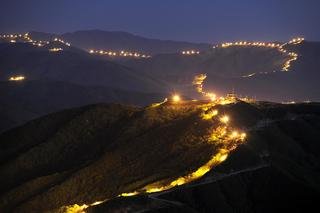
(Citation 1)
I am not, under any circumstances, minimizing the seriousness of the issues surrounding the Korean Peninsula. This post is written to share information that people may not have known or thought about in relation to this area.
My experience at the Unification Observatory in Gangwon Province, South Korea.
I am going to give you a very brief introduction, so that you can follow this topic easily.
The Korean Demilitarized Zone (DMZ) is a strip of land running across the Korean Peninsula around the 38th parallel north (38 degrees north of the Earth’s equatorial plane) dividing Korea into North and South. The 38th parallel stretches 160 miles long (250km) and 2.5 miles wide (4km).
I visited the Unification Observatory in Gangwon Province, right at the edge of the South Korean eastern border (red pin on map) in July, 2011.
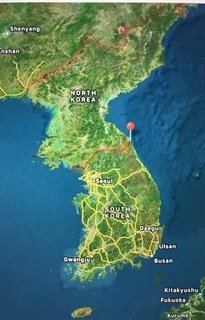
(image taken from google map)
This is the observatory building. The observatory building is located within the CCZ (Civilian Control Zone- a buffer zone set to limit and control the entrance of civilians near the DMZ) therefore, I had to go through immigration before getting to the observatory.
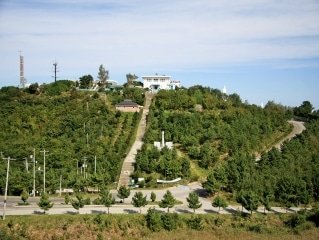
(citation 2)
The Unification Observatory has a Korean war exhibition hall, an exhibition hall showing various kinds of household goods and materials from North Korea and has an observation deck.
This is the view from the observation deck. You are looking from the South Korean border (CCZ) towards the DMZ and North Korea. The day I went, it was rainy and overcast.
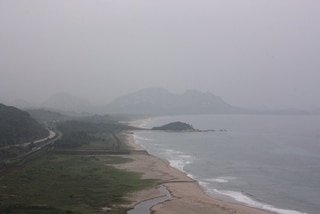
(The actual DMZ fence on the southern border is a completely restricted area and it is illegal to take pictures of the DMZ fence.)
On a nice clear day, you can see quite far ahead, and even see Mount Kum Gang.

(Citation 3)
Here is a close up shot of the North.

The view towards South Korea (this would be the North Korean’s perspective).
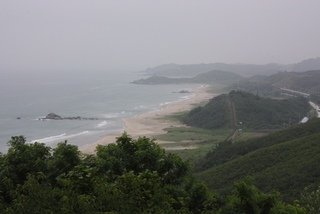
It was a memorable day and I learned a great deal about Korean history and the Korean war.
On the way down, I saw something interesting…
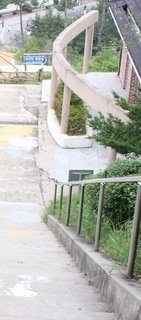
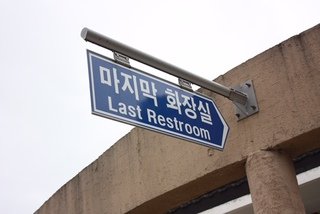
Yes. This is technically the ‘Last Restroom’ in this part of South Korea, before you arrive at the border. The finality of ‘last’ in conjunction with ‘restroom’, makes you want to go, doesn’t it?
This visit led me on a quest to find out more about the DMZ. I found several interesting facts but I’ll only write about two. One is interesting and the other is ironic.
Interesting Fact #1:
Living and farming in the DMZ.
People live and farm in a special area called Dae Seong Dong (대성동), a village on the South Korean side of the demarcation line, within the boundaries of the DMZ. They are called ‘DMZ farmers’.
It is only in this particular part of the DMZ that they are allowed to farm. There are 197 residents as of April 2017. The residents are direct descendants of the original villagers from the area that lived there before the war and are given special waivers to live and farm there. There are strict rules to reside in this area, among a few, they must spend at least 240 nights per year in the village to maintain residency and live under a strict curfew (must be at home by 11pm every night).
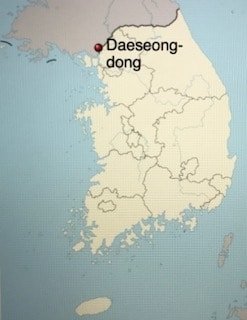
(Citation 4)
So which citizenship do they hold? They are actually classified as refugees.
They hold South Korean passports but are not considered Korean citizens. They are governed by the United Nations Command. And as such, they pay no taxes to the Korean government and are exempt from compulsory military service. They are allowed to farm approximately 10 times more land than an average farmer in South Korea. They also earn about $US 82,000 a year from selling farmed goods in the Korean market with a special label. (Citation 5)
Also, there is an elementary school.

(Sixth grade elementary school students in Dae Seong-Dong, which has only four students.) (Citation 6)
No village will be complete without…a 323ft flag pole?!
In Dae Seong Dong, there is another interesting little fact.
There apparently was a flag pole 'contest' of sorts in the 1980s, when the South Korean government built a 323ft (98.4m) high flag pole in Dae Seong Dong and North Korea responded by building a 525ft (160m) flag pole in their village, Ki Jong Dong. North Korea ‘won’, having the fourth tallest flag pole in the world. Found this illustration amusing.
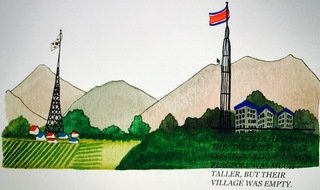
(Citation 7)
Ironic Fact #1:
The DMZ is home to some of the most rarest and critically endangered species on the planet.
The endangered animals found refuge in the most dangerous and heavily fortified place in the world. It is this fact, that is keeping them safe. Safe from humans. Sad isn’t it?
Species that have dwindled or disappeared in some parts of Asia have found refuge in the DMZ. Sightings of rare birds, such as red-crowned cranes and white-naped cranes, are not unusual. Black bears, musk deer, and Amur gorals—a goat relative that lives in the mountains—also inhabit this heavily fortified area.
—Jane J. Lee—
(Article published on the National Geographic- Citation 8)
The DMZ harbors 82 endangered species and thousands of rare plant life.
Some of these species are:
Amur Gorals
Listed as vulnerable on the International Union for Conservation of Nature (IUCN) Red List.
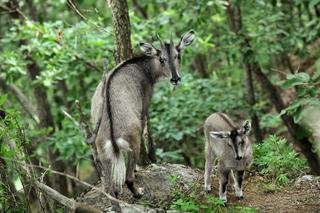
(Photograph by Jong Woo Park, published by National Geographic-Citation 8)
Black-Capped Kingfisher
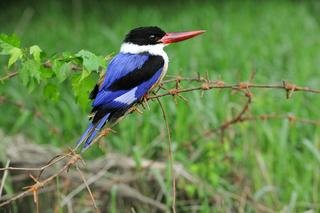
(Photograph by Jong Woo Park, published by National Geographic-Citation 8)
Red- Crowned Cranes
Listed as endangered on the International Union for Conservation of Nature (IUCN) Red List.
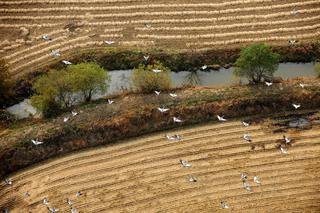
(Photograph by Jong Woo Park, published by National Geographic- Citation 8)
A close up picture of a Red-Crowned Crane
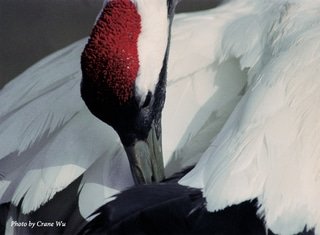
(Photograph by Crane Wu, citation 9)
Amur Leopard
Listed as critically endangered on the International Union for Conservation of Nature (IUCN) Red List.
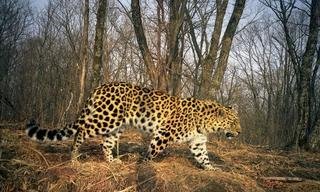
© WWF Russia
Asian Black Bear
Listed as vulnerable on the International Union for Conservation of Nature (IUCN) Red List.
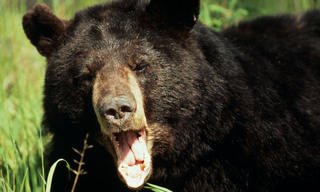
(citation 10)
Siberian tigers
Listed as endangered on the International Union for Conservation of Nature (IUCN) Red List.
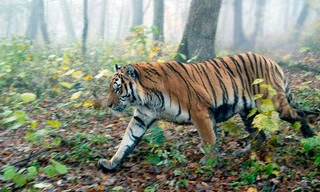
(Citation 11)
I have found this fantastic 2012 article ‘Wildlife haven in the Korean DMZ under threat’, addressing some of the concerns surrounding the wildlife in the Korean DMZ. If you are interested, please go to the address below and have a read.
https://www.theguardian.com/environment/2012/sep/06/wildlife-haven-korean-dmz-threat
I hope this post ignited the curiosity in you, enough so, that you'll find out and learn more about this great country called Korea, and other interesting things that are there. Furthermore, I hope this has reminded you to be considerate consumers, keeping in mind our furry friends and the environment.
That’s it for now! Thanks for reading and I hope you visit my blog again soon!
(I am not paid or affiliated in any way by the companies that have been mentioned or inadvertently been displayed in this post.)
***Due to space constraints and flow of the post, citation has been added in full, at the end of the post.***
_________________________________________________________________________________
1. National Geographic Article ‘Pictures of Wildlife in Korea’s Demilitarized Zone’ (August 19, 2013) written by Jane J. Lee, photographs by Jong Woo Park.
2. DMZ Korean Government Website
www.dmz.go.kr
3. Korean Tourism Organization
www.visitkorea.or.kr
4. Wikipedia: Daeseong-dong map.
(https://en.wikipedia.org/wiki/Daeseong-dong)
5. The New York Times Article ‘As North Korea Tension Rise, Farming in the Demilitarized zone Goes On’ (April 20, 2017) by Motoko Rich.
6. The New York Times Article ‘As North Korea Tension Rise, Farming in the Demilitarized zone Goes On’ (April 20, 2017) Photograph by Lam Yik Fei.
7. Modern Farmer Article ‘Guarded but Growing: A Farmcentric Tour of the Korean DMZ’ Photograph by Maggie Prendergast.
8. National Geographic Article ‘Pictures of Wildlife in Korea’s Demilitarized Zone’ (August 19, 2013) written by Jane J. Lee, photographs by Jong Woo Park.
9. Photograph by Crane Wu, published by International Crane Foundation.
www.savingcranes.org
10. World Wildlife Fund (WWF), Asiatic Black Bear
https://www.worldwildlife.org/pages/bear
11. World Wildlife Fund (WWF), Amur Tiger
https://www.worldwildlife.org/species/amur-tiger
That was a great read, thanks!
You're welcome! Thanks for coming by! :)